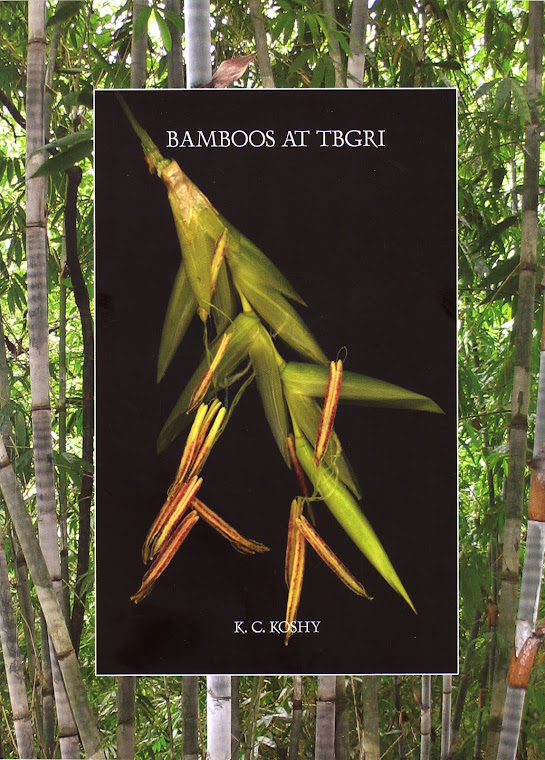© The Board of Trustees of the Royal Botanic Gardens, Kew , 2011
Book Reviews
(Edited by B. M. Spooner)
K. C. Koshy. Bamboos at TBGRI. Pp. 104, 128 colour photographs, 1 painting, 1 graph, 1 map. India Tropical Botanic Garden
Bamboos are commonly seen but mysterious, with some species able to grow one metre a day, and many species not flowering for over 100 years until mass blooming is followed by mass death. In the twenty-first century we still have no record of flowers for many species and we are seemingly no closer to understanding bamboo reproductive systems or the evolutionary driving forces behind them. This worrying lack of knowledge combined with their economic importance make the study of bamboos a priority. This book demonstrates some of the extensive and valuable work funded by the Indian government.
This is a catalogue of 68 bamboo species and 933 live germplasm accessions at the Tropical Botanic Garden India
This is an attractive publication with high quality graphic design and numerous photographs. It succeeds in its stated aim of promoting bamboos and the bamboo collection at TBGRI to the amateur reader. For professionals working with bamboos, the accession and specimen information would perhaps be easier to use in a searchable electronic format, especially if it was made available online. As no modern guide exists to the bamboos of India New World bamboos.
The reviewer would like to thank Dr Jatmi Dransfield for valuable discussion that has greatly contributed to this review.
Maria S. Vorontsova
References
Clayton, W. D., Harman, K. T. & Williamson, H. (2010).GrassBase — The Online World Grass Flora. http://www.kew.org/data/grasses-db.html. [accessed 24 January 2010 ]
Judziewicz, E. J., Clark, L. G., Londono, X. & Stern, M. J. (1999). American Bamboos. Smithsonian Institution Press, Washington DC
